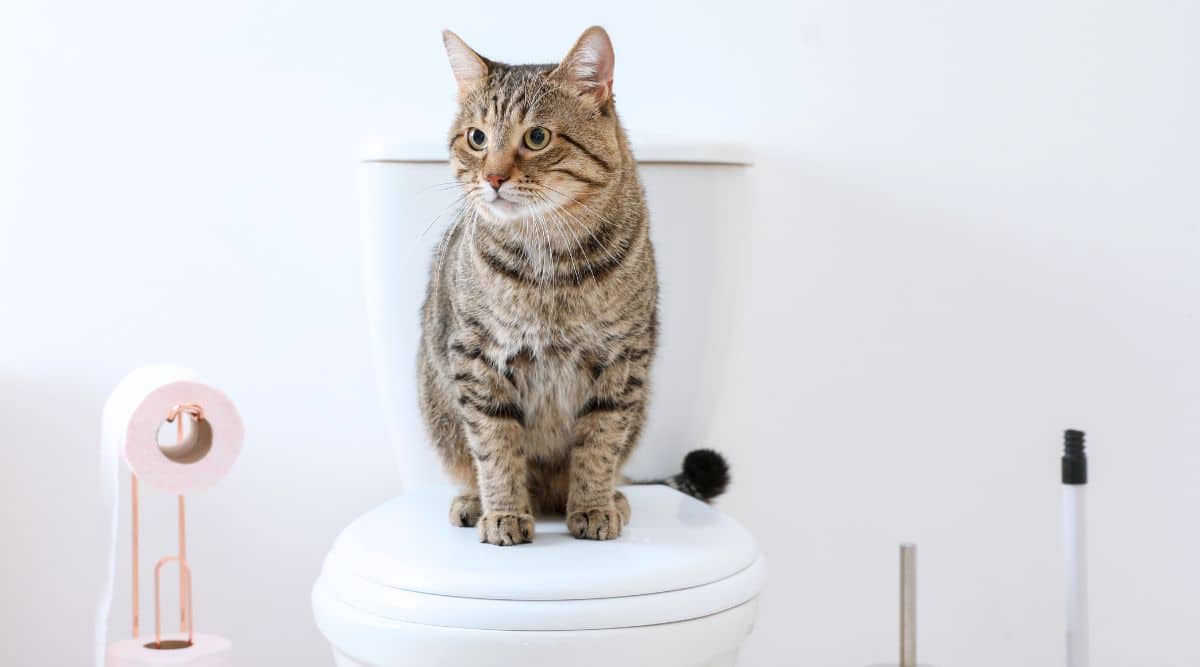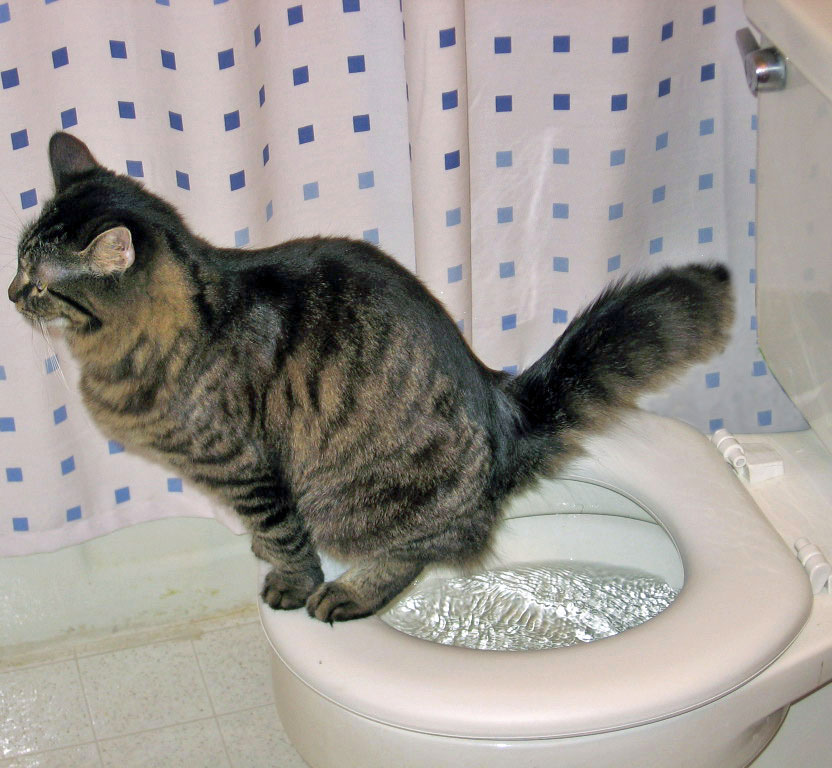We have stumbled upon this article involving Can You Flush Dog and Cat Poo Down the Toilet? down the page on the web and figured it made perfect sense to discuss it with you in this article.

When it involves throwing away waste, specifically animal waste, many individuals often consider the hassle-free option of flushing it down the toilet. Nonetheless, this relatively simple solution can have significant effects for the atmosphere and public health. In this short article, we'll explore why flushing pet waste down the bathroom is a bad idea and give alternative methods for proper disposal.
Intro
Proper waste disposal is critical for maintaining environmental sustainability and public health. While it may appear safe to flush animal waste down the commode, it can lead to various problems, both for the atmosphere and human well-being.
Dangers of flushing animal waste
Environmental influence
Flushing animal waste presents dangerous bacteria and virus right into rivers, which can negatively affect marine environments. These pathogens can pollute water resources and harm aquatic life, interfering with delicate ecological communities.
Public health problems
Animal waste contains unsafe bacteria such as E. coli and Salmonella, which can position significant wellness risks to humans. Flushing animal waste down the commode can pollute water supplies, resulting in the spread of diseases and infections.
Alternatives to flushing
Instead of purging pet waste down the commode, there are a number of alternate disposal techniques that are more eco-friendly and hygienic.
Composting
Composting animal waste is an eco-friendly method to take care of it. By composting, organic matter is broken down right into nutrient-rich dirt, which can be used to fertilize gardens and plants.
Land fill disposal
Disposing of pet waste in a landfill is an additional choice. While not as environmentally friendly as composting, it is a much safer choice to flushing, as it prevents the contamination of water resources.
Family pet garbage disposal systems
There are customized animal garbage disposal systems offered that securely and hygienically deal with pet waste. These systems usually make use of enzymes to break down waste and remove odors.
Steps to proper animal garbage disposal
To guarantee proper disposal of animal waste, follow these actions:
Scooping and getting waste
Regularly scoop and bag pet waste utilizing biodegradable bags. This protects against waste from contaminating the setting.
Making use of designated waste bins
Dispose of bagged animal waste in assigned waste bins, such as compost containers or garbage dump containers. Avoid flushing it down the toilet in all costs.
Cleansing can and family pet locations consistently
Regularly tidy can and animal areas to avoid the build-up of waste and microorganisms. Use pet-safe cleansing products to maintain hygiene.
Advantages of correct disposal techniques
Embracing appropriate disposal methods for animal waste uses a number of benefits:
Decreased environmental pollution
Appropriate disposal techniques lower the threat of environmental pollution, safeguarding rivers and ecosystems from contamination
Decreased danger of water contamination.
By preventing flushing animal waste down the toilet, the risk of water contamination is significantly decreased, protecting public health.
Boosted cleanliness and health
Appropriate disposal approaches advertise better hygiene and hygiene, creating a much safer atmosphere for both human beings and animals.
Final thought
Finally, purging animal waste down the toilet is dangerous to the atmosphere and public health. By taking on alternative disposal techniques and complying with appropriate waste monitoring techniques, we can reduce the unfavorable influence of animal waste and add to a cleaner, healthier earth.
What To Do With Dog Poo – The Do's And Don'ts Of Disposing Of Faeces
Dog poo bins
Some councils provide dedicated dog waste bins in popular dog-walking areas that can take dog poo that has been bagged but you can legally dispose of dog waste in any public litter bin, as long as it is securely bagged. This also applies to your wheelie bin at home.
Do not flush
Water companies do not recommend flushing dog faeces down the toilet because certain parasites can survive the water processing treatment and are potentially harmful to humans. You should also never consider flushing dog poo that has been bagged down the toilet as the bags will not break down and instead create severe blockages in the sewage system.
In the woods
The Forestry Commission promotes a ‘stick and flick’ method for dealing with waste in the woods. This means finding a stick and using it to flick any poo from off the path so that it is out of the way of other walkers. You could also bury it as long as it is not in an area where there might be livestock.
Livestock
Parasites found in dog poo can be transmitted to livestock if they inadvertently eat infected faeces that has been left on grazing land. This could result in the death of sheep or abortion in cattle so you should always make sure you pick up your dog’s waste in fields where livestock could be present.

Regularly tidy can and animal areas to avoid the build-up of waste and microorganisms. Use pet-safe cleansing products to maintain hygiene.
Advantages of correct disposal techniques
Embracing appropriate disposal methods for animal waste uses a number of benefits:
Decreased environmental pollution
Appropriate disposal techniques lower the threat of environmental pollution, safeguarding rivers and ecosystems from contamination
Decreased danger of water contamination.
By preventing flushing animal waste down the toilet, the risk of water contamination is significantly decreased, protecting public health.
Boosted cleanliness and health
Appropriate disposal approaches advertise better hygiene and hygiene, creating a much safer atmosphere for both human beings and animals.
Final thought
Finally, purging animal waste down the toilet is dangerous to the atmosphere and public health. By taking on alternative disposal techniques and complying with appropriate waste monitoring techniques, we can reduce the unfavorable influence of animal waste and add to a cleaner, healthier earth.
What To Do With Dog Poo – The Do's And Don'ts Of Disposing Of Faeces
Dog poo bins
Some councils provide dedicated dog waste bins in popular dog-walking areas that can take dog poo that has been bagged but you can legally dispose of dog waste in any public litter bin, as long as it is securely bagged. This also applies to your wheelie bin at home.
Do not flush
Water companies do not recommend flushing dog faeces down the toilet because certain parasites can survive the water processing treatment and are potentially harmful to humans. You should also never consider flushing dog poo that has been bagged down the toilet as the bags will not break down and instead create severe blockages in the sewage system.
In the woods
The Forestry Commission promotes a ‘stick and flick’ method for dealing with waste in the woods. This means finding a stick and using it to flick any poo from off the path so that it is out of the way of other walkers. You could also bury it as long as it is not in an area where there might be livestock.
Livestock
Parasites found in dog poo can be transmitted to livestock if they inadvertently eat infected faeces that has been left on grazing land. This could result in the death of sheep or abortion in cattle so you should always make sure you pick up your dog’s waste in fields where livestock could be present.

I came across that piece of writing on Can You Flush Dog and Cat Poo Down the Toilet? while doing a search on the search engines. Sharing is caring. You never know, you may very well be doing someone a favor. Thank-you for your time spent reading it.
Click Here